Northern Kenai Peninsula Management Area
Fishing Research
Fishing Research
Kenai River King Salmon Stock Assessment
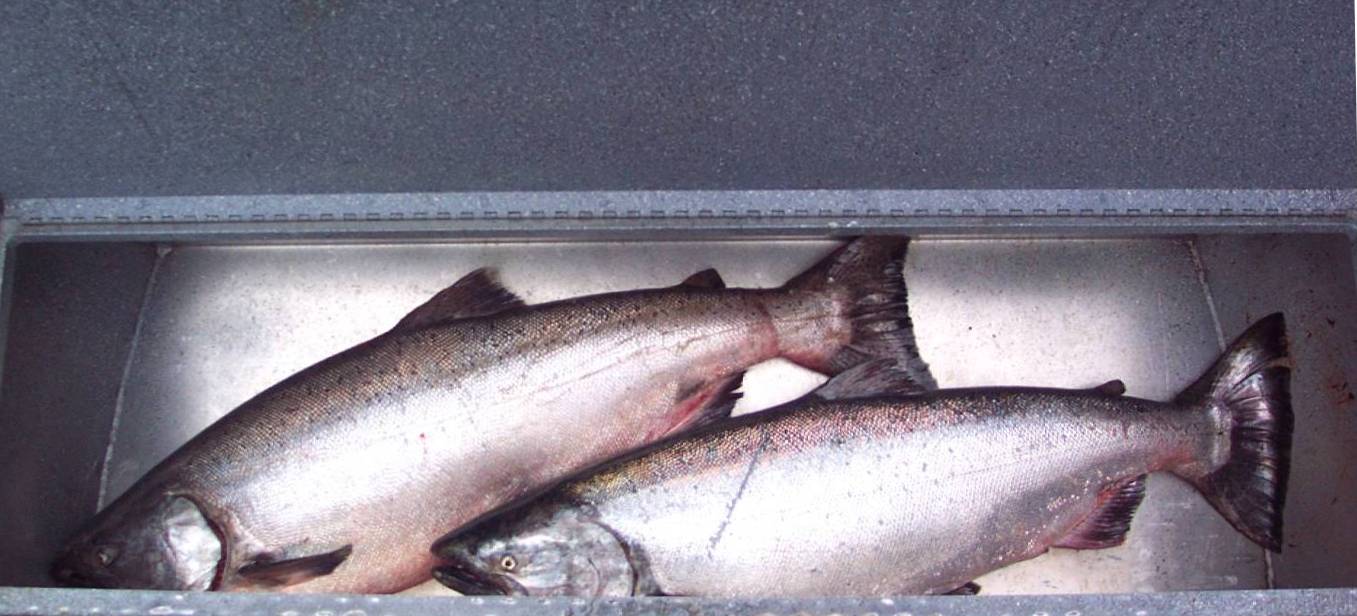
Kenai River king (Chinook) salmon stock assessment is a complex management effort where ADF&G biologists use 24 stock parameters to assess Kenai River king salmon. For example, the comprehensive stock assessment program uses data from angler creel surveys, commercial harvest sampling, inriver gillnetting, genetics and estimation of inriver run size using the Adaptive Resolution Imaging Sonar (ARIS), weirs and radio telemetry to drive the implementation of management plans for these stocks. The key objectives of the Kenai River stock assessment program are to: (1) model inriver run and fishery mortality to manage the fisheries inseason, and (2) develop brood tables for long-term stock assessment and escapement goal analyses.
Kenai River King Salmon Sonar
Adaptive Resolution Imaging Sonar (ARIS) is used at river 14 on the lower Kenai River to estimate passage of king salmon 34 inches (75cm) or longer in length entering the river. The sonar site was chosen for its bathymetric, or river contours, qualities which allow the sonar technology to cover the entire span of the river. The sonar is located just above tidal influence which allows more complete bank-to-bank coverage and ensures fish are migrating upstream. Software allows biologists and technicians to measure fish in the ensonified zone to estimate the number of fish 34 inches (75cm) or longer. By only estimating large fish, the estimates are less likely to be corrupted by presence of other species such as red (sockeye) and pink salmon. The goal of this project is to produce daily estimates of net upstream passage of fish 75cm or longer for both early and late runs. Data collected from the sonar are critical for effective inseason management of Kenai River king salmon.
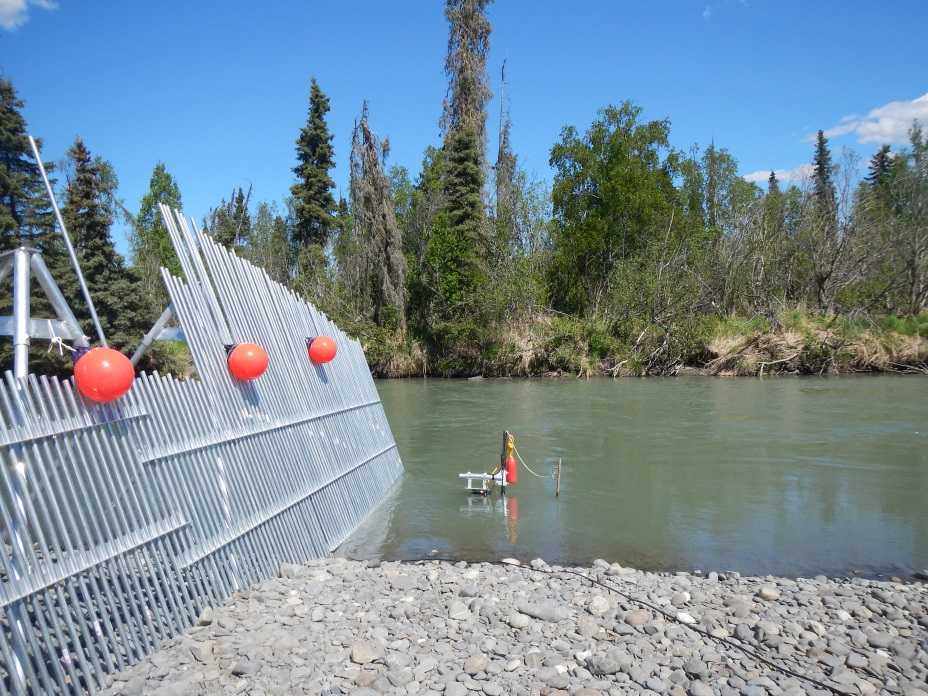
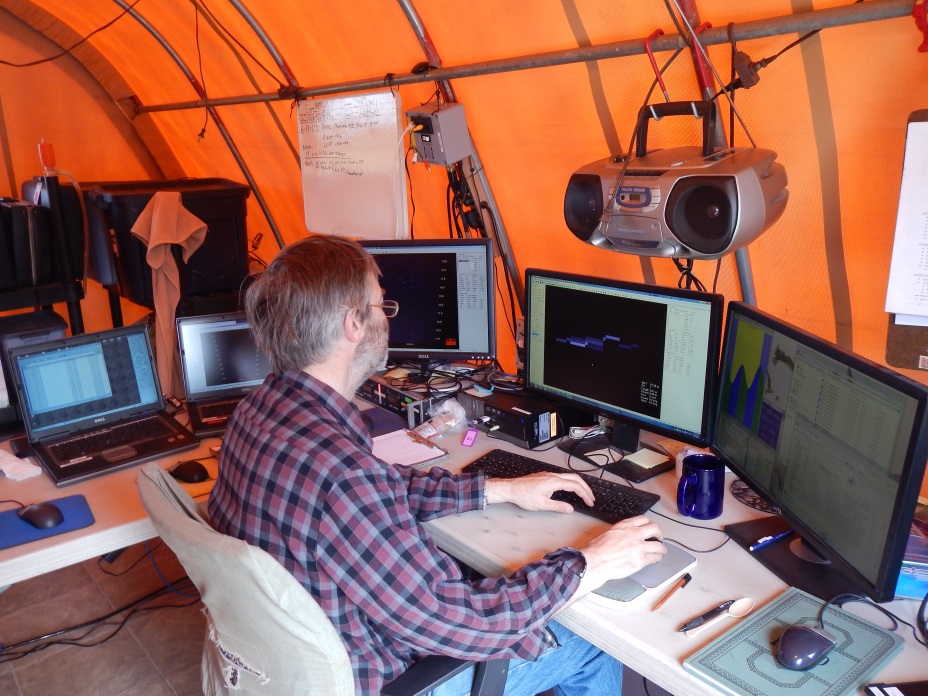
More about the Kenai River Sonar
Inriver Gillnetting Program
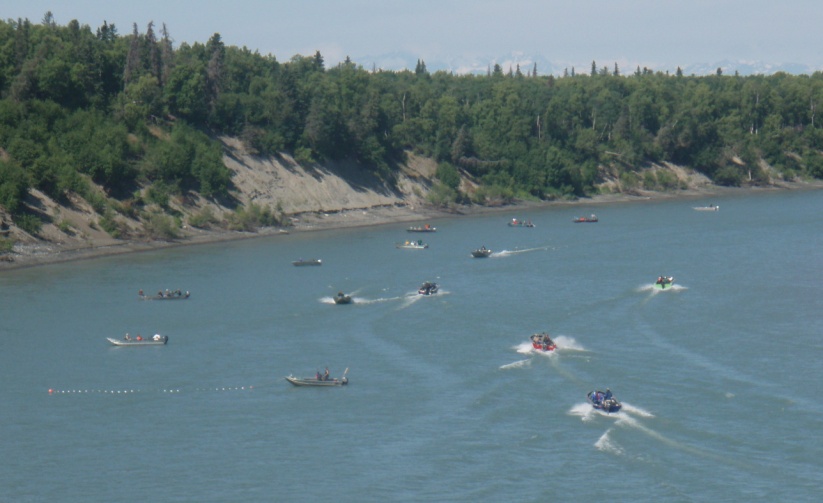
Standardized gillnetting occurs daily from May 16 until the sonar is discontinued or through August 20 at river mile 9 in the estuary area of the Kenai River. Sampling is scheduled around the tide cycles. 60-foot gillnets are drifted downstream with the current to capture upstream migrating salmon. Gillnets of two different mesh sizes (4.0 inch and 7.5 inch stretched mesh) are used to reduce selectivity of the size and species of fish caught. Once caught, captured king salmon are untangled and remain in the water while they are placed in a padded cradle attached to the outside of the boat. Each fish is then sampled for biological data and released to continue their upstream migration. In past years some king salmon were tagged with a radio transmitter (see section on radio telemetry below). Goals of this project are to estimate the age, sex, and length compositions of returning king salmon for both the early and late runs, and to estimate the daily species composition (king salmon vs other Pacific salmon species) and daily catch rates or CPUE (catch per unit of effort) of king salmon. Data collected from the inriver gillnetting program are critical for effective inseason management of Kenai River king salmon.
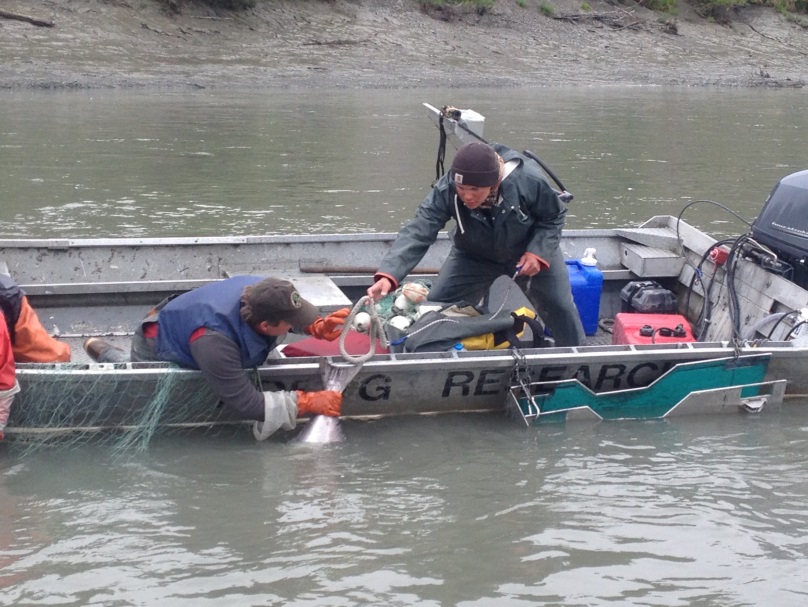
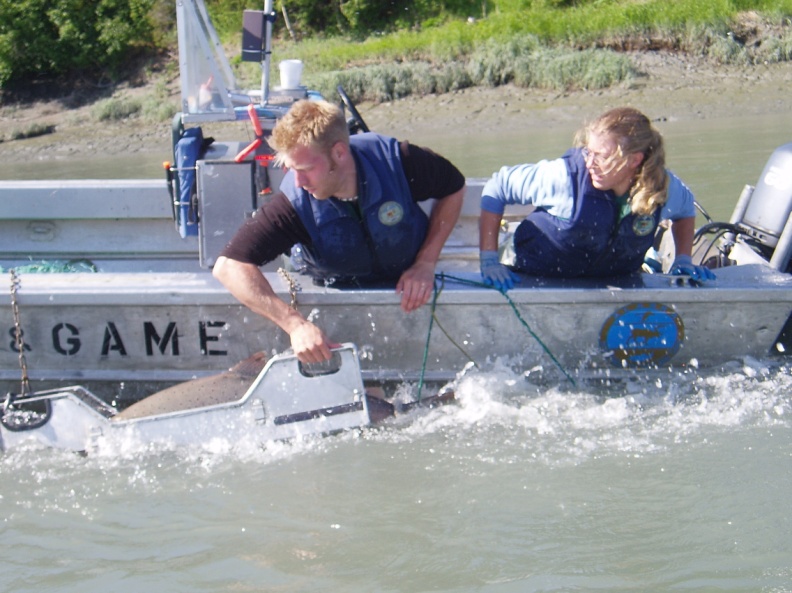
Sport Fishing Creel Survey
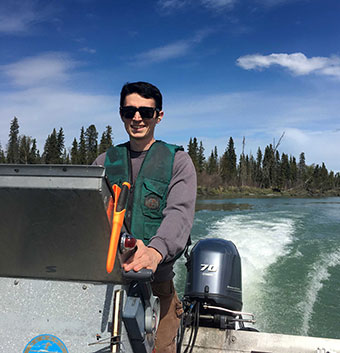
An onsite creel survey of anglers has been conducted on the lower Kenai River during king salmon season since 1977. The primary goals of the creel survey are to estimate the number of king salmon both caught and those retained by the sport fishery downstream of the Soldotna Bridge to the Warren Ames Bridge. Anglers are also interviewed for catch and harvest rate information as they exit the fishery. Harvested king salmon are sampled for biological data including age (scale sample), sex, length, and genetic tissue (axillary process). Data collected from the creel survey are critical for effective inseason management of Kenai River king salmon.
Genetic sampling
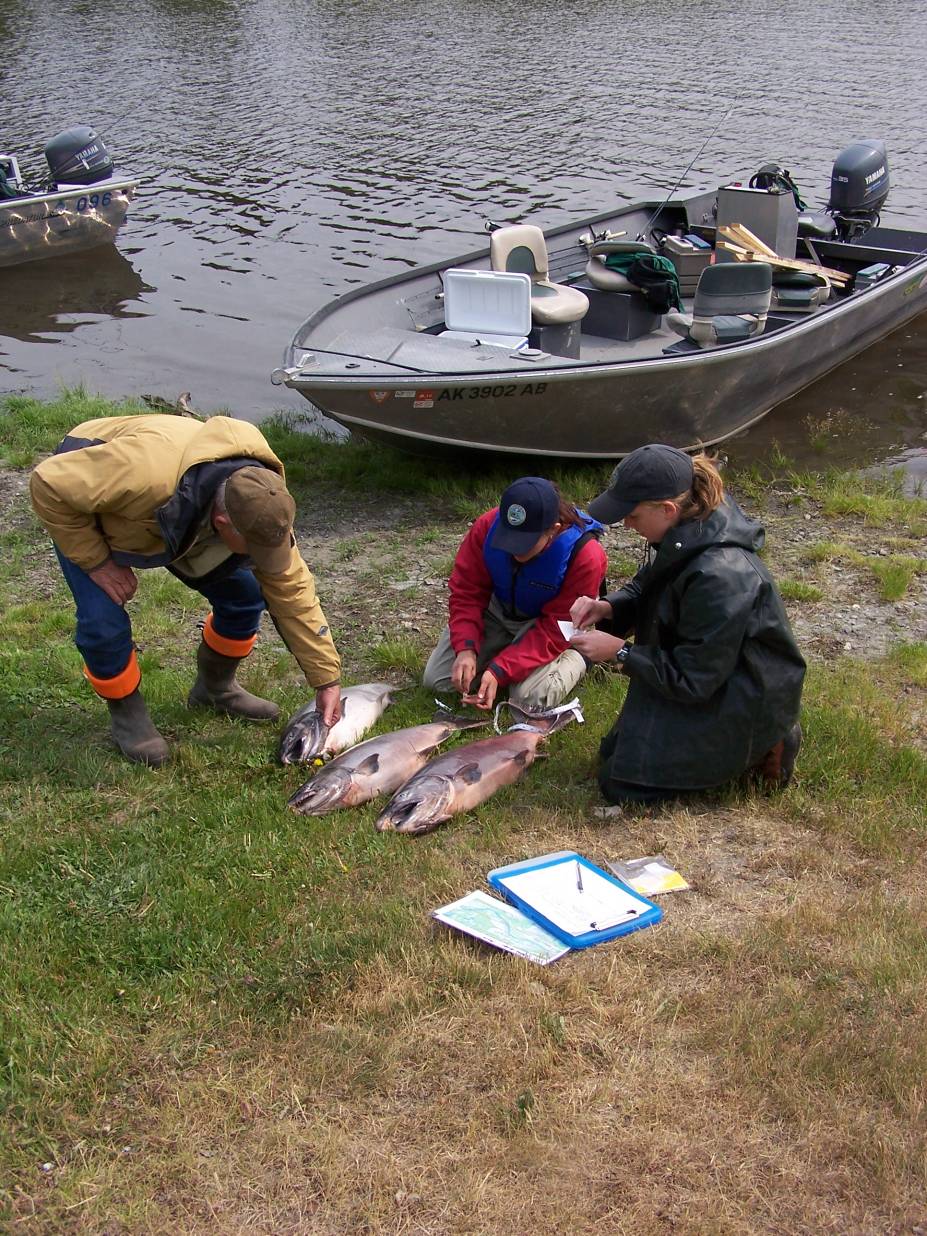
Recent advances in genetics and the development of a king salmon genetics baseline database now provides a tool to differentiate different stocks of king salmon that enter the Kenai River. Sampling king salmon genetic tissue, using the axillary process, in the inriver gillnetting program provides information on the return timing of tributary and mainstem spawning fish. King salmon harvested in the sport fishery are sampled for genetic information as well to determine stock-specific harvest estimates and refine fishing regulations. Recently, it has also become possible to incorporate genetic stock information data into comprehensive abundance and run-timing models and obtain stock-specific estimates of annual abundance.
For up-to-date Kenai River king salmon counts, please visit: http://www.adfg.alaska.gov/sf/FishCounts/index.cfm?ADFG=main.kenaiChinook
King salmon Radio Telemetry
Kenai River king salmon were radio-tagged from 2010 to 2016. Early-run king salmon were tagged from 2010-2016, while late-run king salmon were tagged from 2012-2014. Esophageal implant radio transmitters were inserted into some king salmon captured at the river mile 9 inriver gillnetting project and released to continue their migration. Radiotagged fish were monitored both passively, using a network of stationary radio receiving stations, and actively, by foot, boat, or aerial surveys. Stationary receiving stations allowed 24-hour monitoring of radiotagged king salmon at key points along their migration routes whereas active tracking was used to determine times at specific locations. This system provided multiple, redundant locations for each tagged fish with resolution sufficient to detect noteworthy behavior patterns.
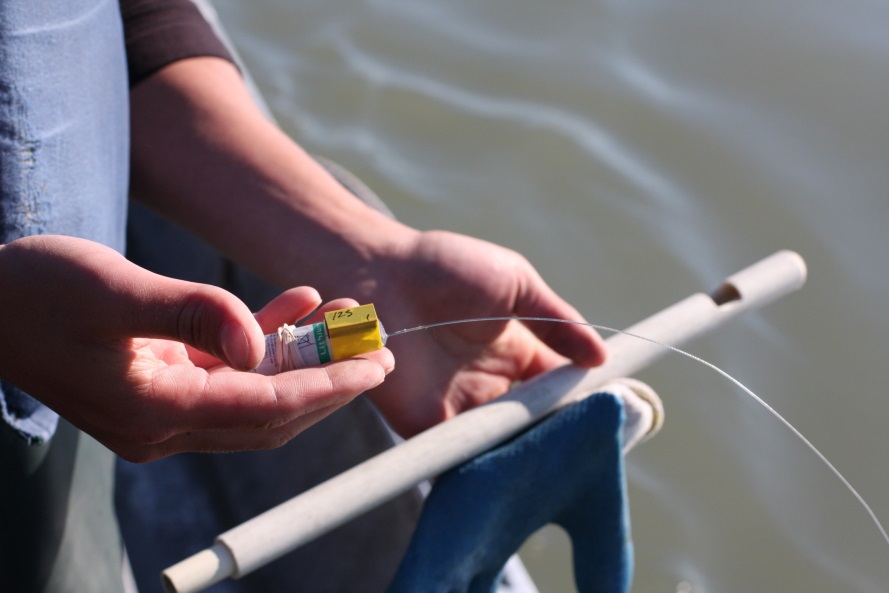
Spawning locations were determined by analyzing all available data. Spawning destinations for tributary spawners were determined via aerial surveys whereas spawning destinations for mainstem spawners were determined via boat surveys. Tagged king salmon were analyzed relative to time of entry to the Kenai River (early or late run) and eventual spawning destination (tributary or mainstem). King salmon that spawned in tributaries of the Kenai River migrated into the river during spring and early summer (May-June) whereas for mainstem spawning king salmon, the time of entry to the Kenai River was not related to the eventual mainstem spawning location. Killey River and Benjamin Creek fish were the predominate stocks entering in May to mid-June. Funny River fish primarily entered the Kenai River in June. Mainstem spawning fish - entered in mid-June to mid-late August. Nearly all fish radiotagged in July during 2012-2014 were mainstem spawners. There were few tributary spawners still present in the lower Kenai River (downstream of Soldotna Bridge) in early July.
Radiotagged king salmon with a spawning destination in the Killey River drainage (including Benjamin Creek) were the largest component of the early run in all datasets. Mainstem spawners and Funny River spawners were the second and third largest contributors of the early run. The spawning contribution of all other tributary spawners was minor. Mainstem spawners made up 15% to 28% and averaged 21% of the early run. For mainstem spawners, the area downstream of the Soldotna Bridge had the greatest number and density of radiotagged fish every year (38%), followed by the area between Moose River confluence and Skilak Lake outlet (average 28%), Soldotna Bridge to Moose River confluence (average 22%), and lastly Skilak Lake inlet to Kenai Lake outlet (average 12%).
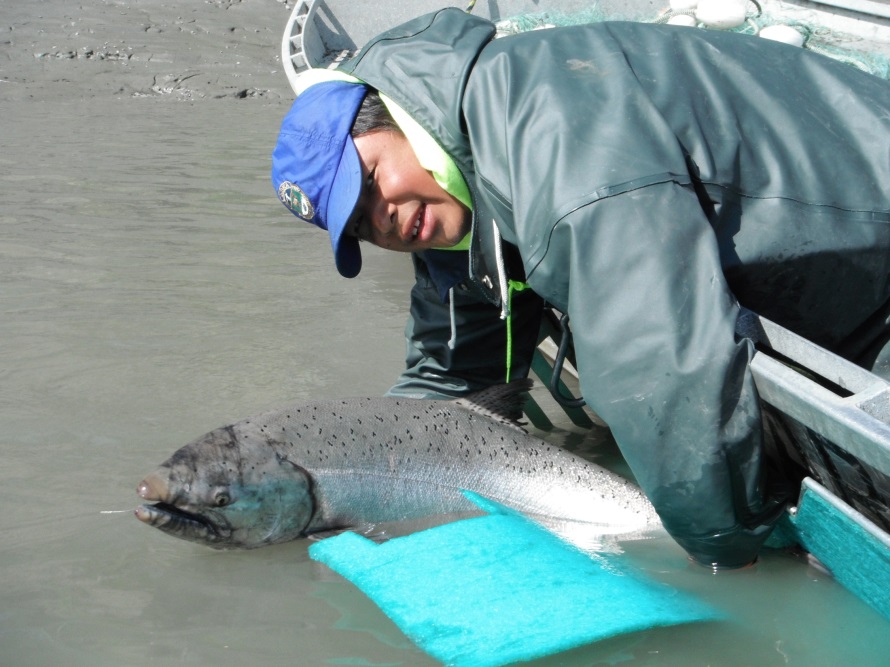
Commercial Harvest Sampling
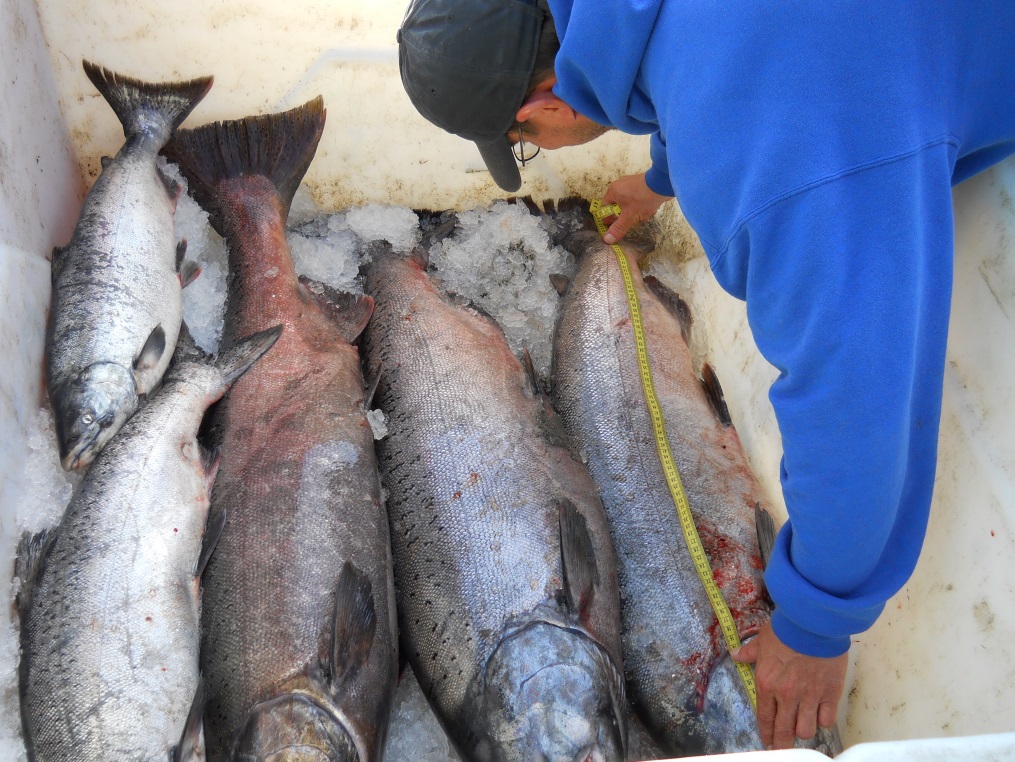
King salmon harvested in the late-run eastside set gillnet (ESSN) commercial fishery in Upper Cook Inlet are sampled by department technicians for genetic analysis by clipping off the axillary process, a small fin beneath the pelvic fin of the fish. Samples are taken throughout the entire commercial fishing season and from all fishing districts. Age, sex, and length composition data are also collected. The goals of this project are to estimate the king salmon stock composition of the harvest and to estimate the age composition of king salmon harvested. Data collected from the ESSN commercial king salmon harvest is not used for inseason management, however aids in estimating the total annual run of late-run king salmon to the Kenai River. Estimating the total run, provides the data necessary to review the escapement goal and forecast Kenai River late-run king salmon. Results show that Kenai River mainstem spawning fish compose most of the harvest every year, averaging 71% of the total harvest. Kasilof River mainstem spawning fish compose nearly all the remainder of the harvest.
For more information, see the Publications by Eskelin, Perschbacher, Miller, Key, Reimer, Fleischman, and McKinley.
Kasilof River Early-run King Salmon Assessment/Enhancement
Crooked Creek is a tributary to the Lower Kasilof River and is where early-run Kasilof River king salmon are assessed and enhanced at the old Crooked Creek hatchery facility. This project has 3 components:
- King salmon escapement monitoring and biological sampling,
- Smolt stocking and imprinting and,
- Adult brood stock collection and egg takes.
Project goals are to census the spawning escapement and total run of naturally- and hatchery-produced king salmon that pass the Crooked Creek weir, and to estimate the age and sex composition of the run. Naturally-produced king salmon are hatched and reared in natural conditions but have experienced some degree of artificial selection in their ancestry. Hatchery-produced king salmon are reared by the department in the William Jack Hernandez Sport Fish Hatchery in Anchorage. Information collected by this project monitors population dynamics of Crooked Creek king salmon and is used to determine appropriate spawning escapements to ensure a sustainable sport fishery.
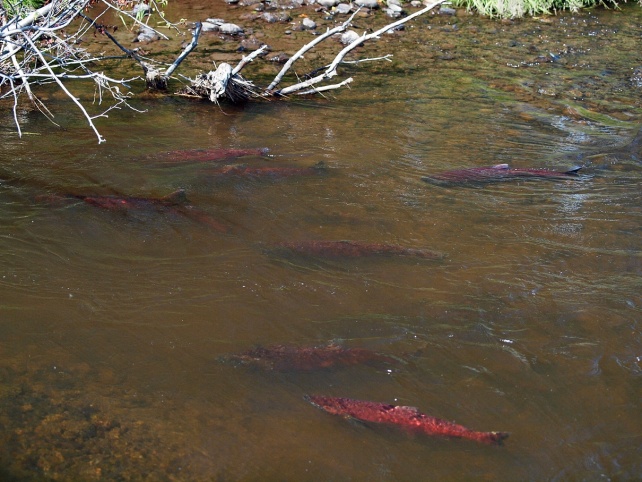
King Salmon Escapement Monitoring and Biological Sampling
Escapement monitoring for both naturally-produced and hatchery-produced king salmon occurs daily at a department weir using a digital video recording (DVR) system, an underwater camera, and a passage chute. Fish are either allowed unobstructed passage upstream through the facility or collected for use as brood stock (see below). From recorded video, each fish is observed for marking status (presence or absence of an adipose finclip) and counted. Twice weekly, fish are trapped and sampled for marking status, sex, length, and a scale sample is collected for determining the age of the fish.
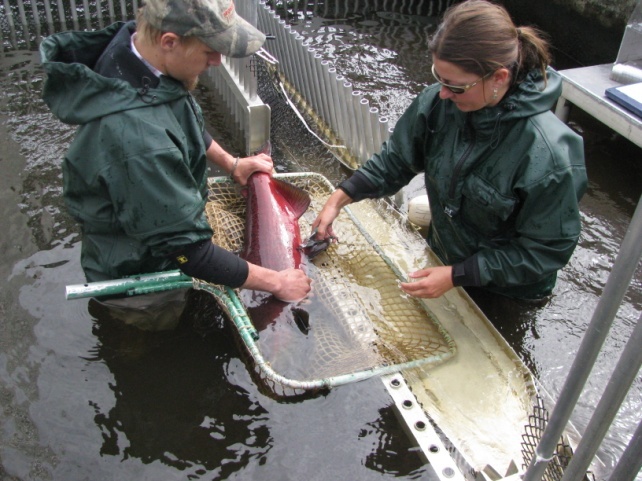
Smolt Stocking and Imprinting
Concerns about Crooked Creek king salmon straying to other freshwater streams have resulted in decreased stocking levels. 1. Approximately 140,000 - 145,000 king salmon smolt are stocked into Crooked Creek annually. These fish are reared at the William Jack Hernandez Sport Fish Hatchery located in Anchorage, and delivered to the Crooked Creek Facility the first week of June where they are held in raceways for imprinting, usually for a minimum of 7 days.
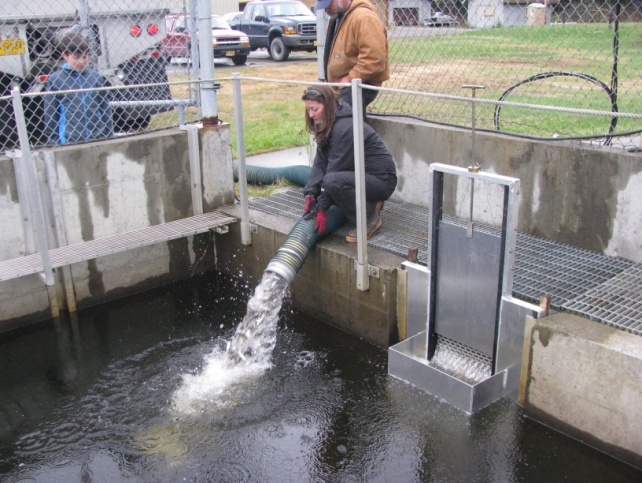
Brood Stock Collection and Egg Takes
On sampling or brood stock collection days, king salmon are trapped and checked for sexual maturity. If fish are thought to be sexually mature, they are passed to a concrete raceway where they are held, and later, artificially spawned during an "egg take" when many fish are artificially spawned on the same day. Fish that are not mature enough or are too mature are counted and passed upstream, allowing them to spawn naturally. Eggs and milt (gametes) collected during the egg take are transported to the William Jack Hernandez Sport Fish Hatchery where they are fertilized, incubated and reared. Only progeny from naturally-produced king salmon are then stocked back into Crooked Creek the following year.
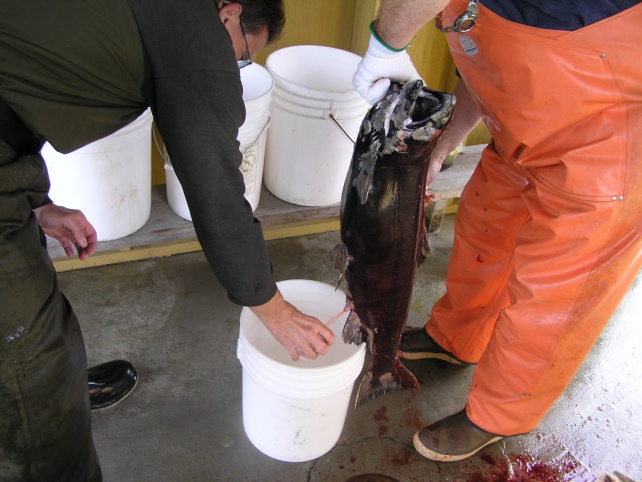
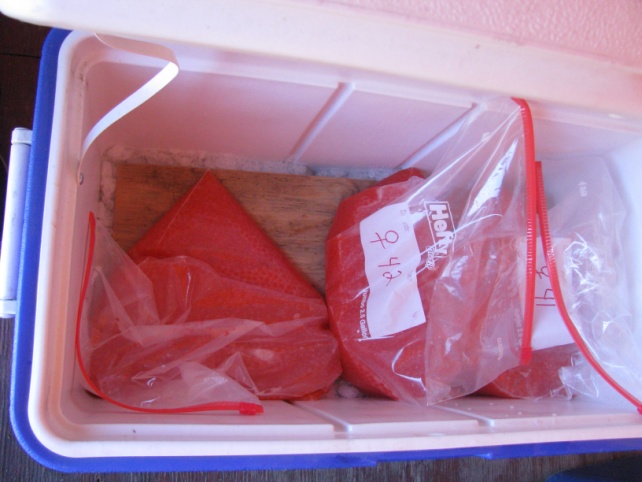
Up-to-date Crooked Creek Weir fish counts.
More information about ADF&G Division of Sport Fish hatcheries and stocking programs.
For more information, see the Publications by Gates, Cope, Reimer, Pawluk, and Begich.
Russian River Red Salmon Escapement Study
The Russian River originates in the Kenai Mountains on the Kenai Peninsula and drains into the upper Kenai River between Kenai and Skilak lakes. The Russian River red (sockeye) salmon escapement study is the most long-standing research program in this area. A counting tower was first established in 1963. A weir has been operated at the outlet of Lower Russian Lake annually since 1969. The weir is used to census the spawning escapements of red salmon and count other salmon (silvers (coho) and kings) that utilize the upper reaches of the drainage to spawn. Clear water and low water depth in the Russian River make it easy to identify salmon species as they pass through the weir. Biological samples (age, sex, and length) of red salmon are also collected at the weir. In addition, weir personnel collect climatological and river discharge data, operate the Russian River fish pass when necessary, and conduct stream surveys to enumerate, or count, spawning salmon downstream of the weir.
The escapement study provides information necessary for in-season management and refinement of escapement objectives. Two runs of red salmon (early and late) return to the Russian River. Escapement goals are established for both runs. The early run has a biological escapement goal of 22,000 - 42,000 fish and the late-run sustainable escapement goal of 44,000 - 85,000 fish as counted through the Russian River weir.
Up-to-date Russian River Weir red salmon passage counts
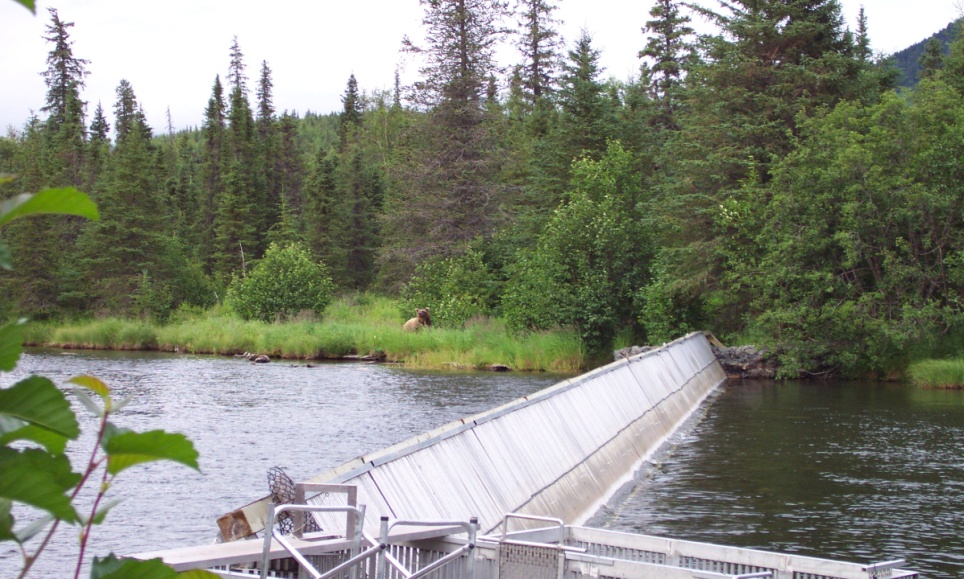
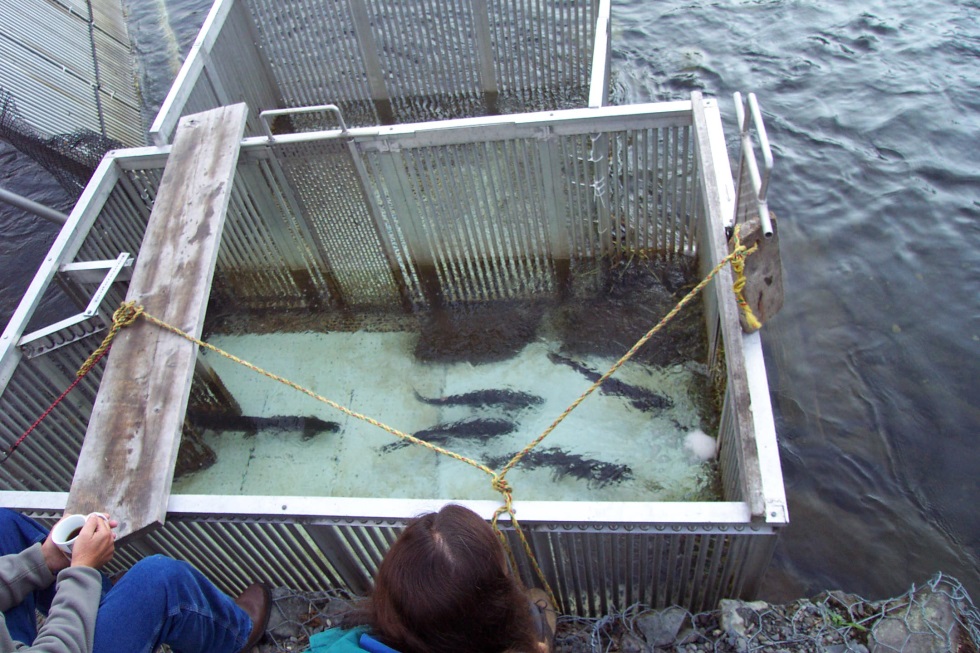
For more information, see the Publications by Lipka, Gates, and Simons.
Invasive Northern Pike
The Northern Kenai Peninsula Management Area oversees a northern pike control program that has existed for nearly 20 years. Northern pike are an invasive species in Southcentral Alaska and can harm native fish populations such as juvenile salmon, and resident species, particularly where habitat utilization between the species overlaps (i.e. calm, relatively shallow and weedy habitat). Initial efforts mostly utilized gillnetting to define northern pike distribution and to reduce select populations. By 2008 Alaska Department of Fish & Game (ADF&G) began using rotenone, a plant-based piscicide, a toxin specific to animals that breathe though gills, to remove northern pike. An important aspect to the northern pike removal program is to restore native fish species to waters after the northern pike are removed. Examples where native fish are being restored following the removal of northern pike include Stormy Lake (Swanson River Drainage) and the Mackey Lake system within the Soldotna Creek Drainage and former pike-invaded lakes in the Tote Road area south of Soldotna.
The goal of this program is to eliminate northern pike from the entire Kenai Peninsula. In total there have been 25 Kenai Peninsula waterbodies known to support invasive northern pike populations. As of 2020, the last known Kenai Peninsula northern pike population is in the Miller Creek drainage near the northern tip of the Kenai Peninsula. A partnership between ADFG the United States Fish and Wildlife Service and the Kenai Watershed Forum will be working towards removal of this northern pike population. Ongoing fishery monitoring efforts, native fish reintroduction work and public education about invasive northern pike will continue into the future. To protect our native fishery resources, ADF&G asks that the public be vigilant and retain and report any capture of a northern pike, or other invasive fish species, caught from the Kenai Peninsula or elsewhere in Alaska. The hotline for reporting a northern pike or other invasive species is: 1-877-INVASIV.
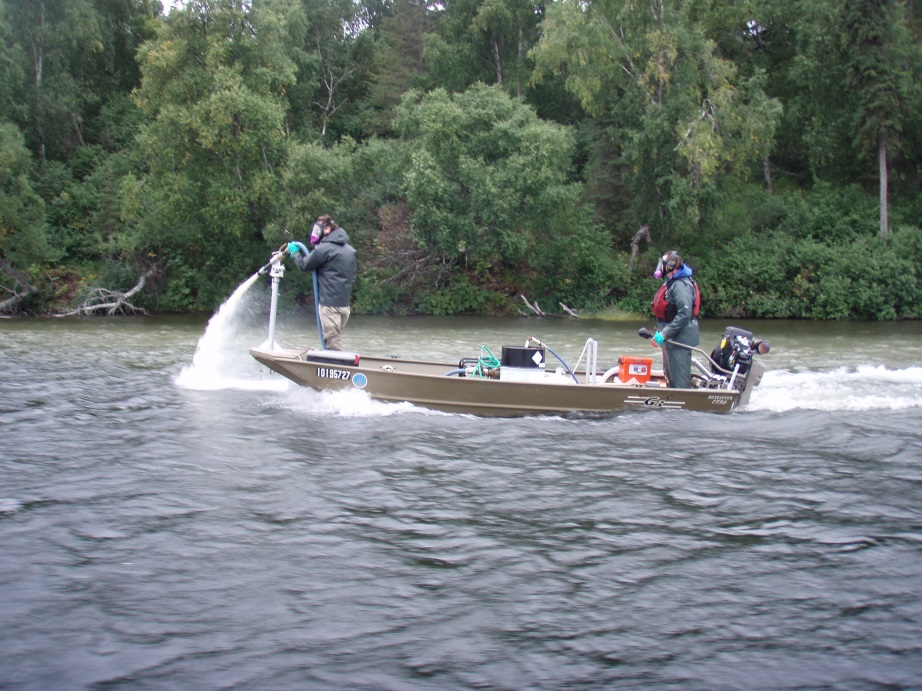
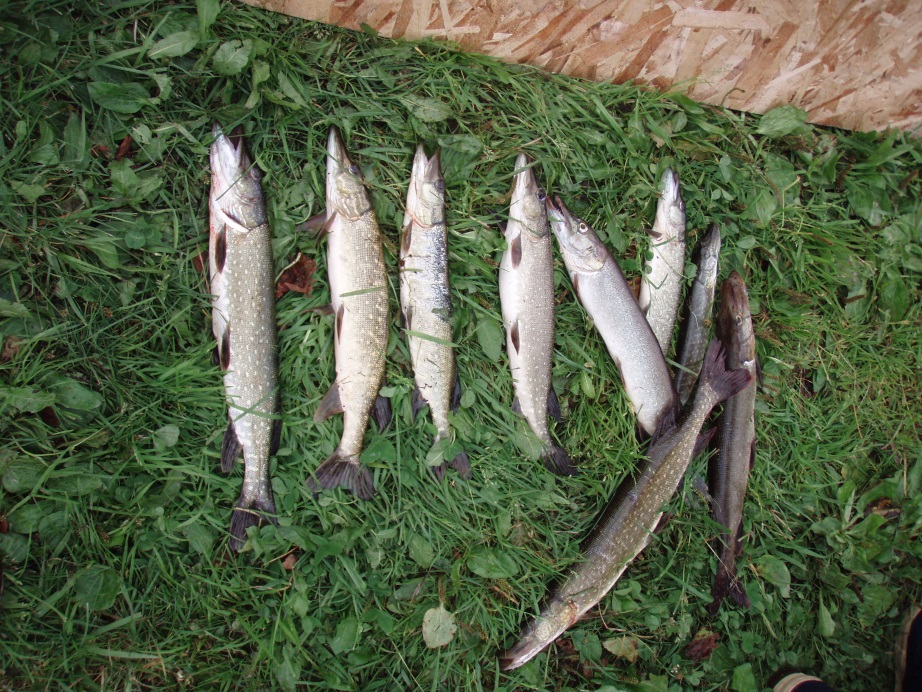
Learn more about Invasive Pike
For more information, see the Publications by Massengill, Dunker, McKinley, and Begich.
Kenai River Rainbow trout
Kenai River rainbow trout have been studied periodically to assess population status, migratory behavior, and spawning locations and timing. A multiple event mark–recapture study was conducted on rainbow trout (Oncorhynchus mykiss) in the upper Kenai River in 2018. The objectives of this study were to estimate the abundance and composition of rainbow trout in the most heavily fished section of the upper Kenai River (river miles 69.6–73.2), and to compare these estimates to those from previous surveys conducted in 1986, 1987, 1995, 2001, and 2009 on the same stretch of river. Overall, it appears that the upper Kenai River rainbow trout population remains above levels seen in the mid - to late 1980s and are as high or higher than during any study. A migration study was conducted during 2010 when radio tags were surgically implanted into large rainbow trout captured in the lower Kenai River during the summer. Movements of radiotagged fish were monitored to identify the timing and location of spawning areas of rainbow trout in the Kenai River downstream of Skilak Lake. In 2017 and 2018, a multiple event mark-recapture study was conducted on rainbow trout (Oncorhynchus mykiss) in the middle Kenai River, just downstream of Skilak Lake. Preliminary data from the study suggests the population of trout in this section of the river is healthy.
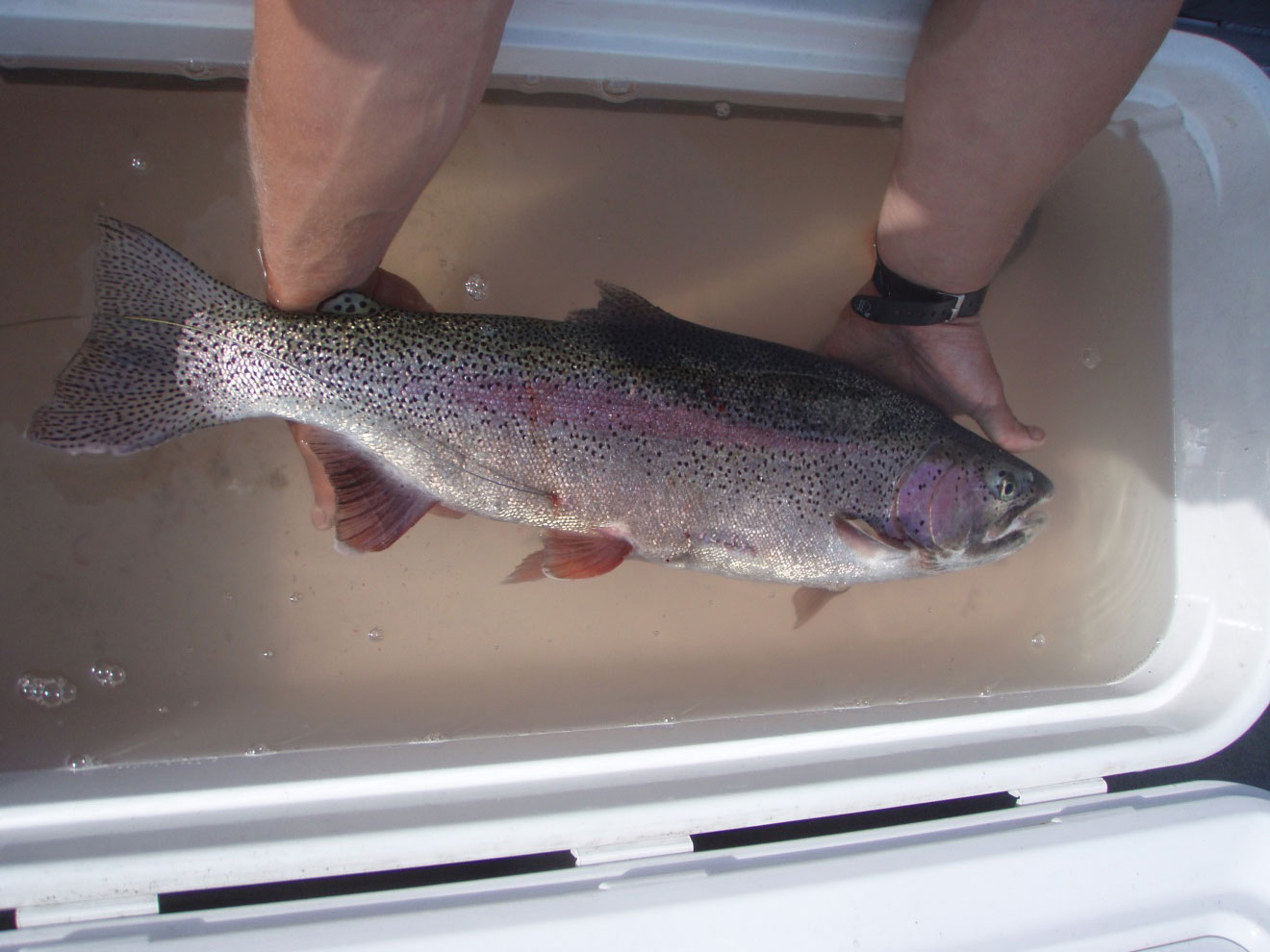
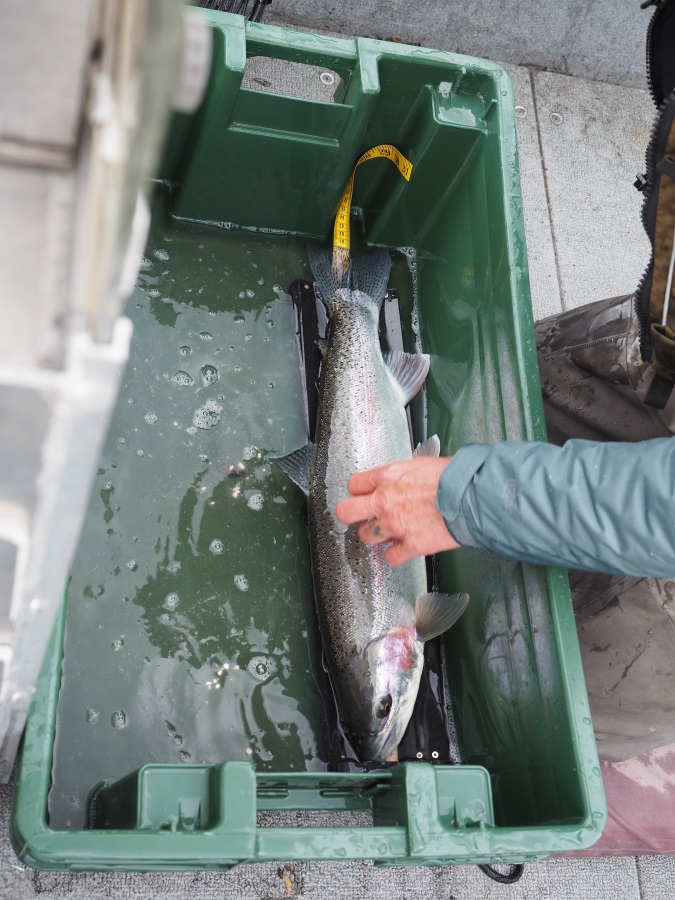
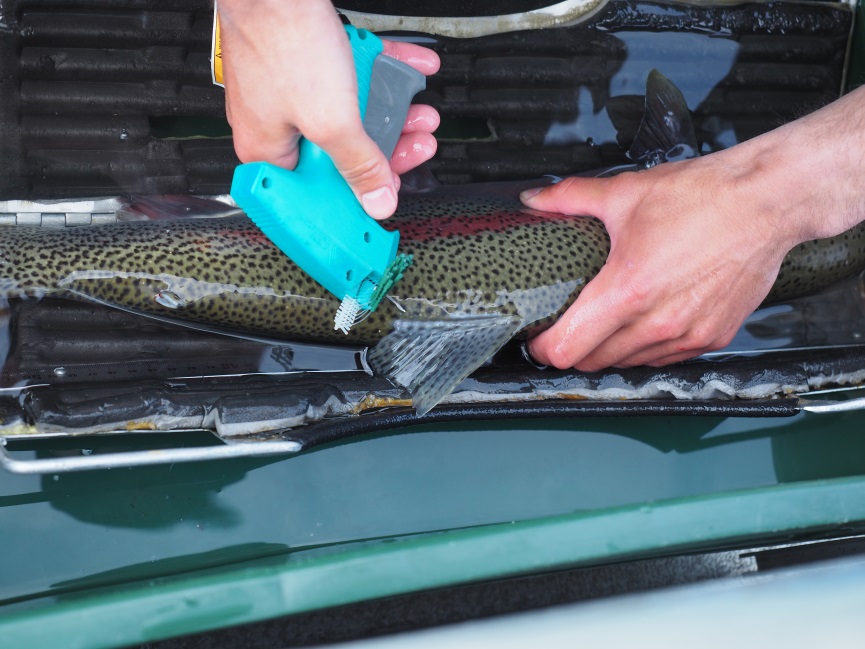
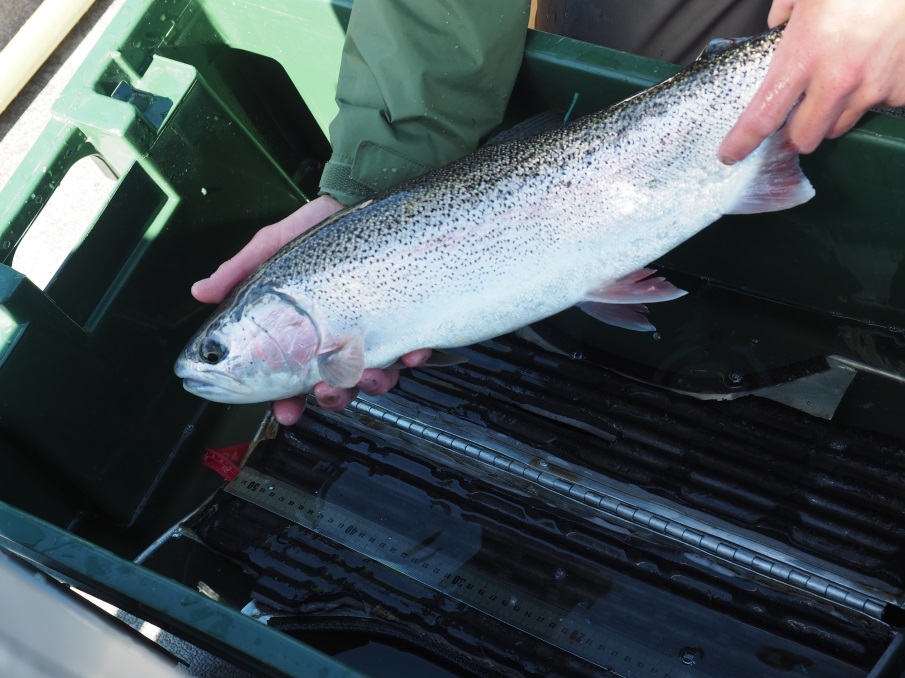
For more information, see the Publications by Eskelin, Pawluk, and Begich.
